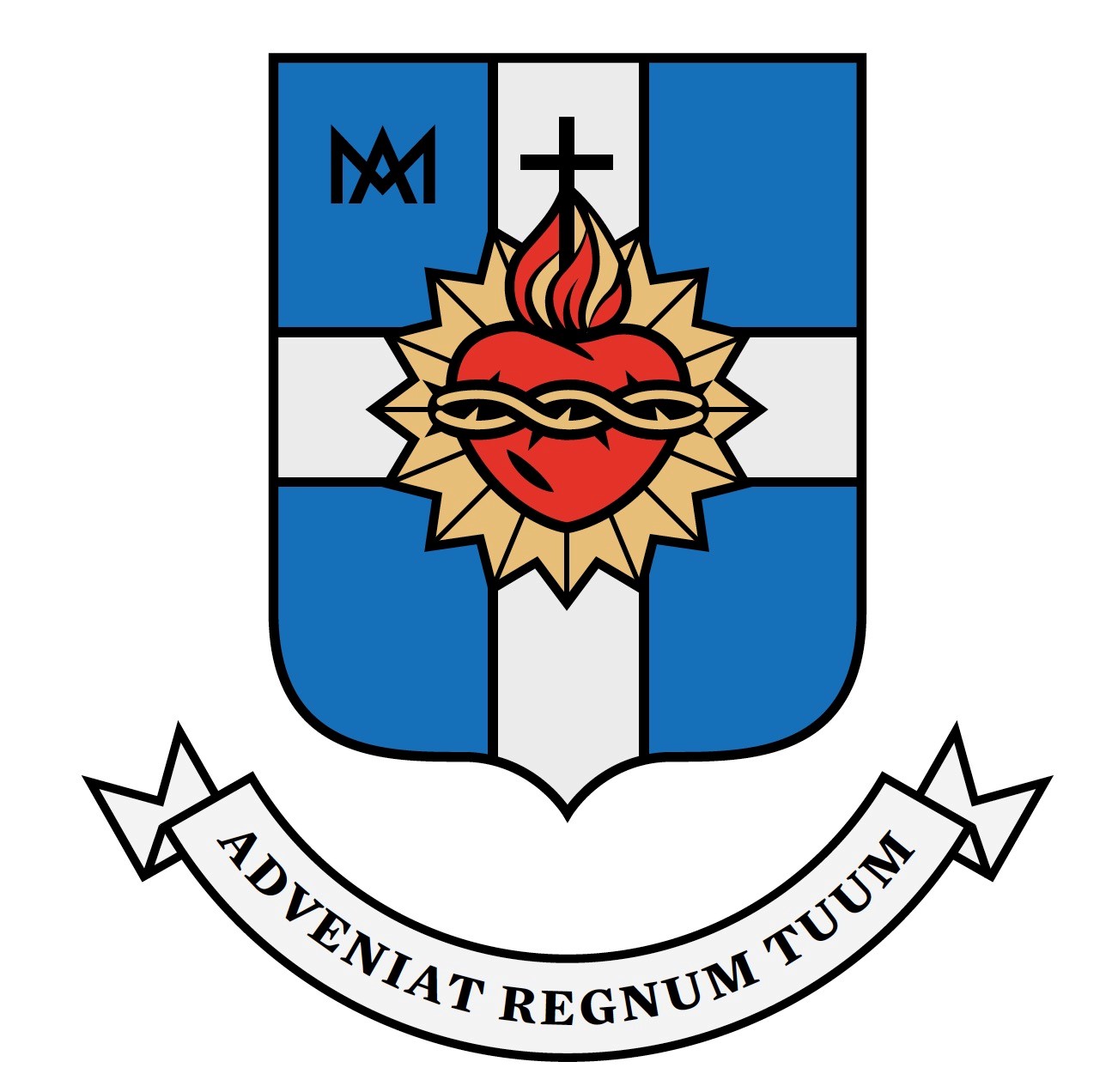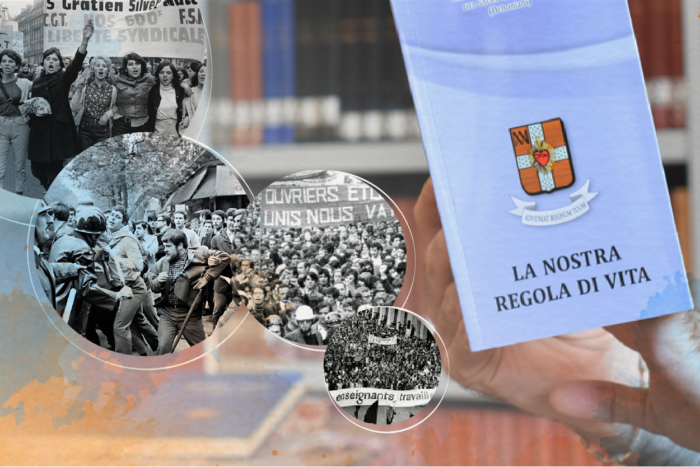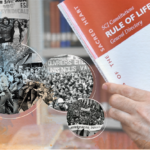The Dehonian Renewal (as Seen by a Young Priest)
This reflection-testimony of mine begins with a brief setting of the context for my comments: I went through all the years of my initial formation up to my priestly ordination (1957) during the time that preceded the Council. As a young priest I was thus able to see all the transformation that took place in the Church and in religious institutes with Vatican II, prophetically defined by Pope John XXIII as a great “new Pentecost”.
During the various phases of its celebration, I followed the work of the Council closely in Rome on behalf of the then nascent Centro Editoriale Dehoniano. During the General Chapter of 1967, in which Fr. Bourgeois was elected General superior, even though I was not a chapter member, I was in charge of the journalistic service, along with Fr. Ledure, and I sent bi-weekly reports by mail to various communities of the congregation.
That Chapter was, in my opinion, a new springtime for consecrated life, and for our Institute, sprinkled with the dew of the Spirit, from which “new things” blossomed, stirred by his life-giving breath. It was, as some have said, the beginning of a true and proper re-foundation.
In his closing address, Fr. Bourgeois summarized the “powerful lines” and the “major pivotal points” that had matured during the chapter discernment in the following three points, which were then destined to be the platform for the entire post-chapter journey and for the so-called “adequate renewal” required by the decree “Perfectae caritatis” and by the subsequent Motu Proprio “Ecclesiae Sanctae”, to which all religious institutes were invited to take up:
Relationship between consecration and mission
“We realized,” said Fr. Bourgeois, “that the two aspects could not be separated. Whether it was a question of religious life itself, or of the specific attitudes of reparatory oblation that characterize it in our Institute, in each case we recognized and attempted to understand and emphasize this vital relationship…. There are not two loves, but it is from the depths of our own love for the Lord and the consecration which it implies that our mission is defined, in the same way that love for one’s neighbor is defined only by love for God”.
At the same time, “the life of union, the availability-abandonment and the reparatory character of these attitudes were taken up in this perspective of oblation and recognized as… the result and the inspiration of our ecclesial mission. As the very object of the witness that the Institute must bear in its apostolic action in the Church”.
Community life and government of the Institute
“Beyond the indispensable juridical norms, the properly evangelical character of the ecclesial community in general and of the religious community has been highlighted.” The traits of this evangelical community are “unity and communion in love, the bond is Christ and the place of each member is defined not so much in function of the social hierarchy as in function of his direct and personal relationship with the Lord who re-unites. We have seen how this could and should characterize our community relations, the very structure of our community, the sharing of responsibilities, the exercise of common rights, the manner and spirit of ‘government’ or, to put it better, the organization of community life.”
The renewal of our form of community life and its organization and a more evangelical conception of human relationships and of the nature and function of authority.
A renewed awareness of the demands of some of our apostolic goals and, above all, of the inspiration that should guide all our activity.
Post-Chapter Work
All of the post-chapter work of the following years – those of aggiornamento – has moved and developed around these three cornerstones and we now find it expressed in that “treasure” that is our Rule of Life, which unites together the renewed Constitutions and the General Directory.
The accent is not so much on the term “Constitutions” but precisely on “Rule of Life” to indicate that our life is essentially not so much a set of norms to be observed, but a journey in the following of Christ, as witnesses of the primacy of the Kingdom of God, united to Christ in his love and in his oblation to the Father, participants in the mission of the Church and called to profess the Beatitudes, attentive to the appeals of the world.
Within this perspective is placed our call to live in community, which must be a “community of life, “faithful to hearing the Word and sharing the Bread”.
Interesting is also the new explanation of what we mean by reparation: the old mystical-intimistic conception is overcome: n. 23 of the Rule of Life defines it “as a welcome to the Spirit, as a response to Christ’s love for us, as a communion in His love for the Father and as a collaboration in His work of redemption in the midst of the world.”
Equally significant is the renewal and change of our daily prayer, which should draw its inspiration from the spirit of the Congregation, particularly through the Act of Oblation and Eucharistic Adoration; it should conform to that of the Church, with the adoption of the Liturgy of the Hours; and it should “adapt the content and form of our prayer in keeping with the culture and needs of our time, taking into account directives from the Church.”
Of great importance are also the guidelines regarding fraternal life in community: the binomial “superior-subordinate” disappears in favor of fraternity and co-responsibility, in view of the common mission.
The service of authority must be understood not as the exercise of power, but as a “true ministry” of an evangelical nature that finds its model in Jesus the Good Shepherd.
With regard to formation, the importance of creating a communion of life, in an atmosphere of work and apostolic service, in which each religious feels interested in the task of formation, is emphasized. In this favorable environment, the candidate will find help for the human and spiritual growth of his vocation.
In the administration of goods, it is stated with great clarity that “it is the Gospel, for us as religious, which must be the ultimate norm and the highest rule in the administration of temporal goods, as in our whole life.”
The Rule of Life, fruit of the renewal called for by the Council, is the result of several years of research and dialogue, first in the Provinces and then during various General Chapters. It represents for us, as it is written in the presentation of the typical edition of 1986, “This Day of God”; it tells us how to make our charism bear fruit according to the needs of the Church and the world. For each of us it is the book that, starting from the Gospel, reminds us of the essential if we want to live our religious consecration faithfully.”
Brief biographical element: Antonio Dall’Osto
Member of ITS Province, collaborated during the work of the XV General Chapter (1966-1967). Currently (2022), he resides in the community of Bologna I.





